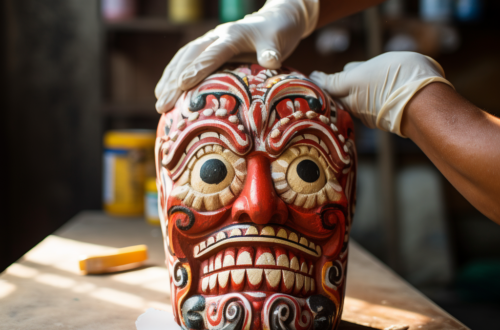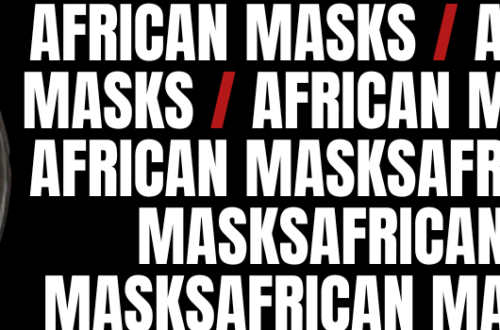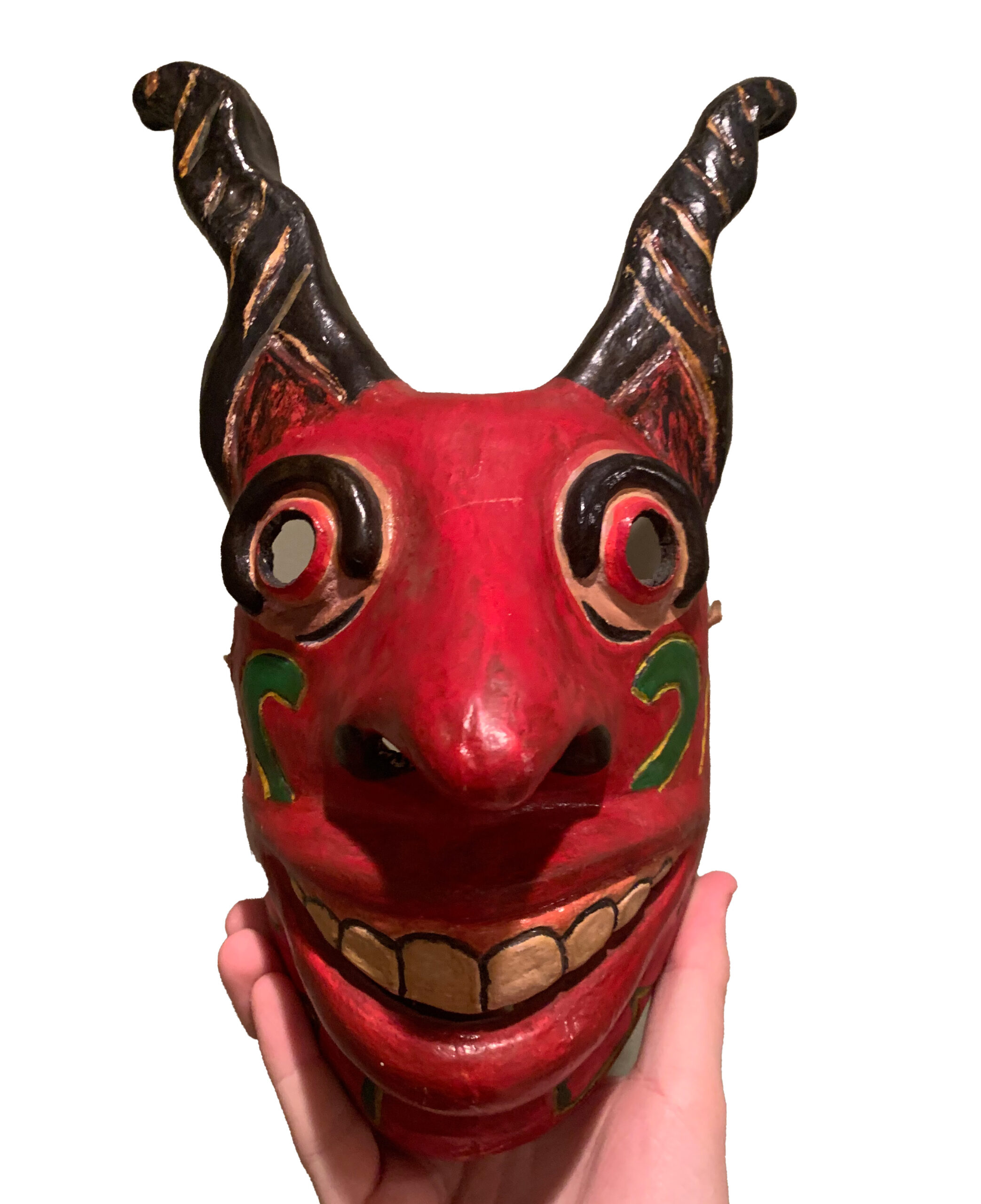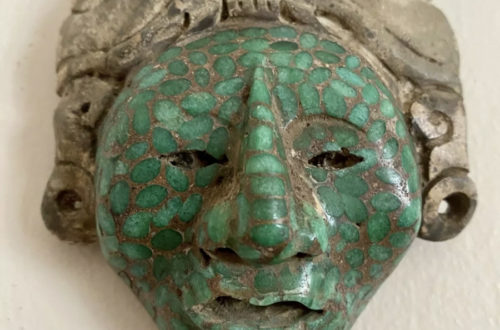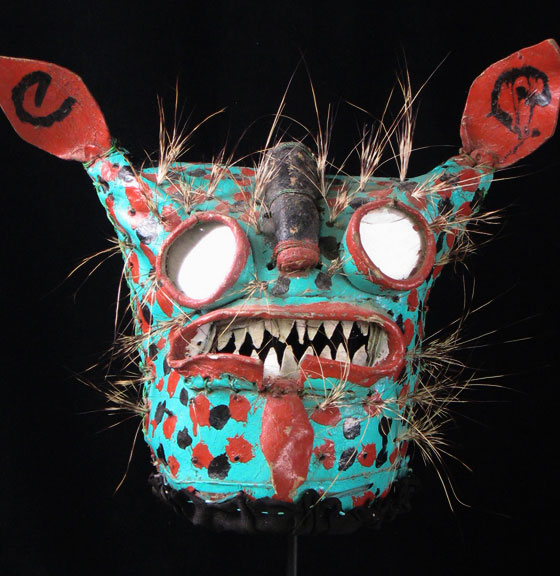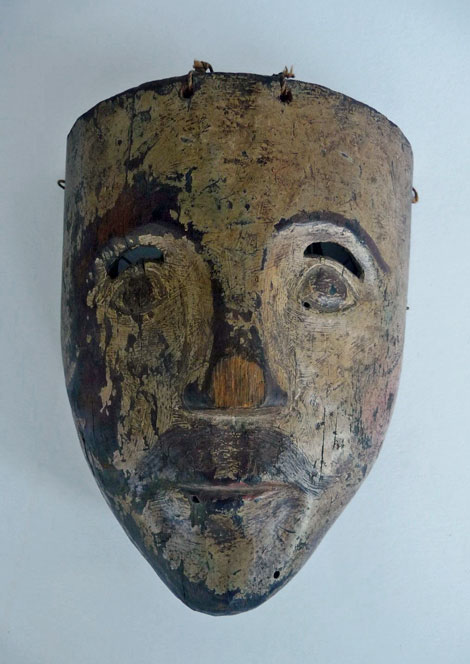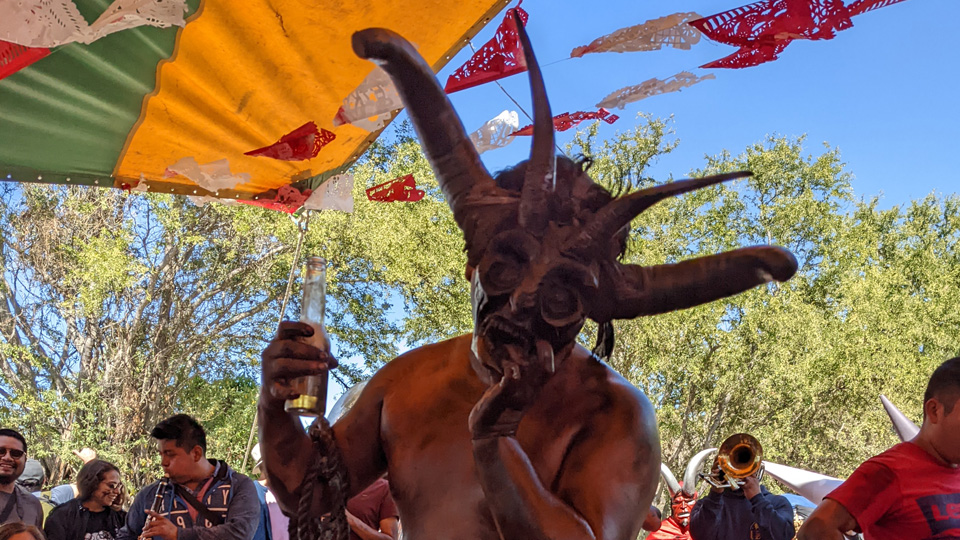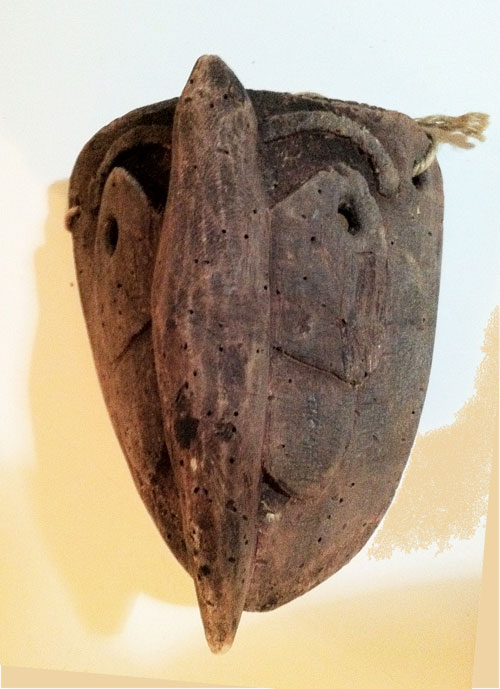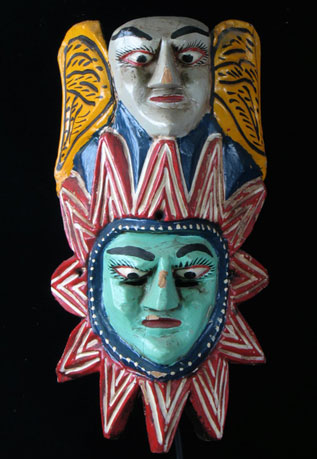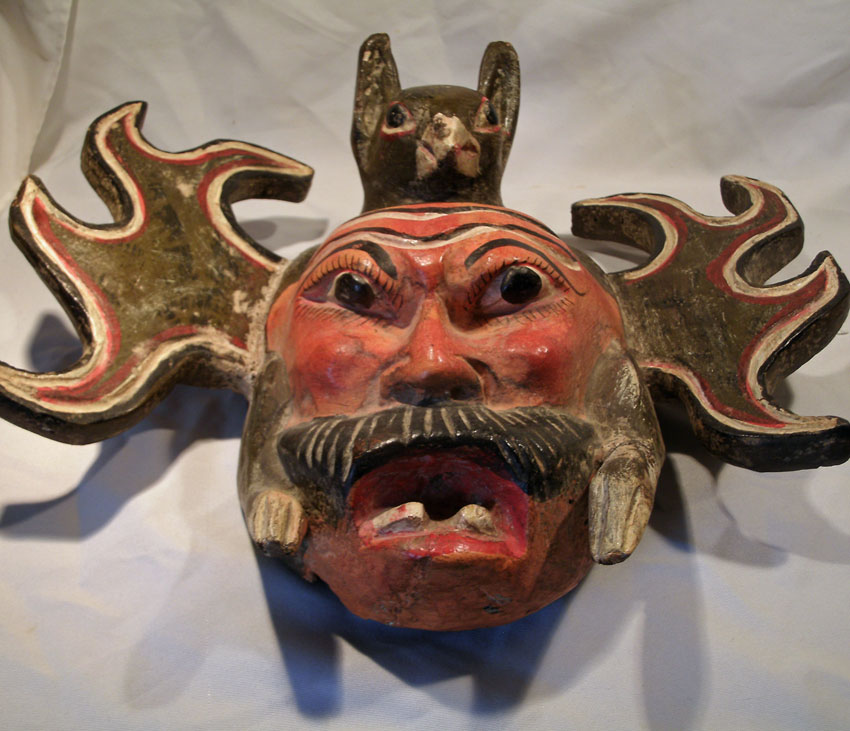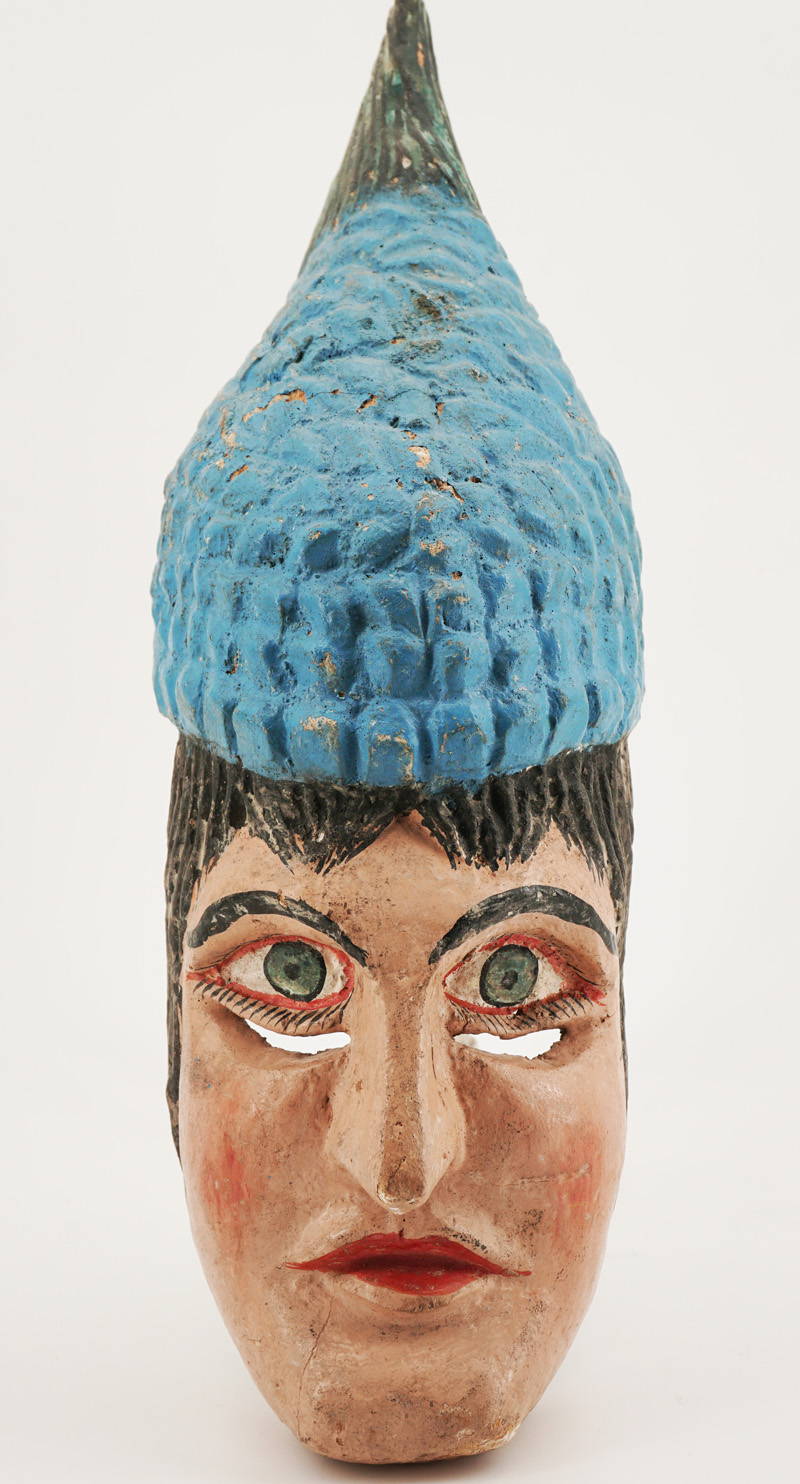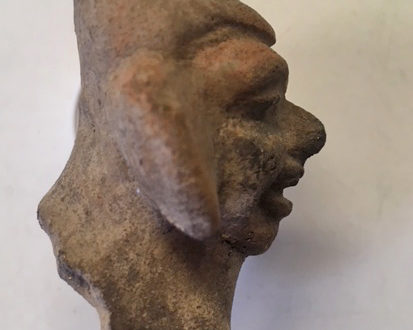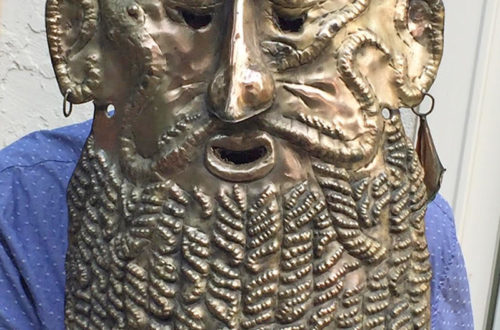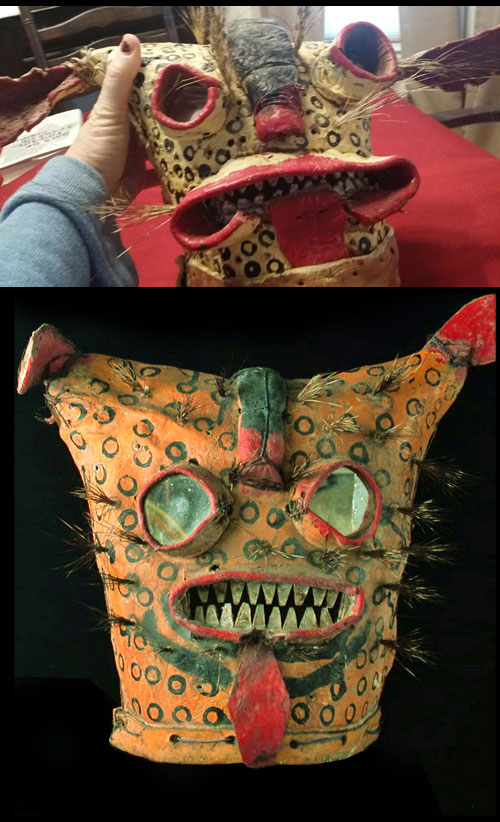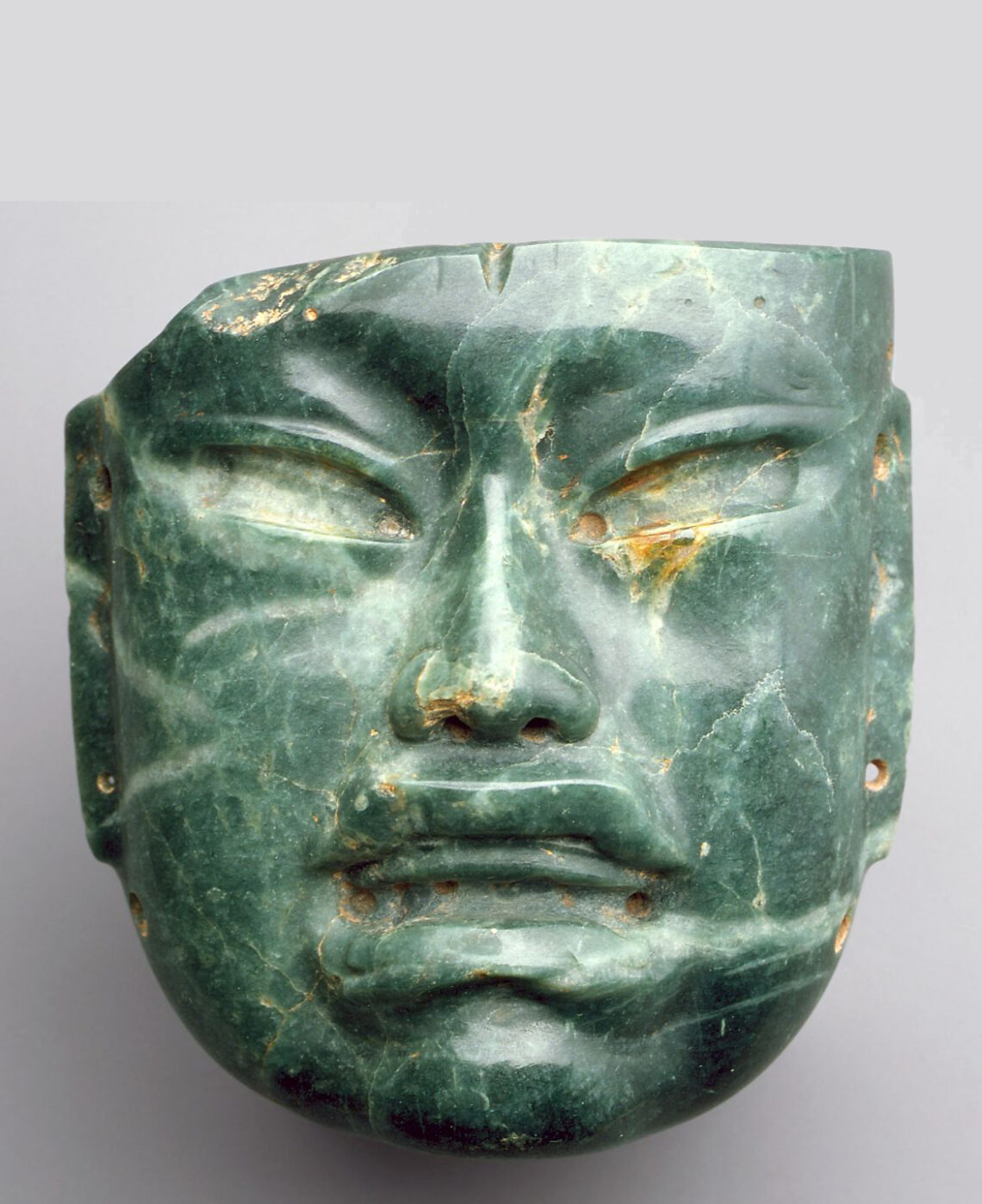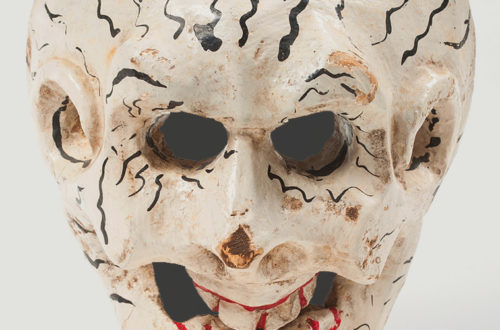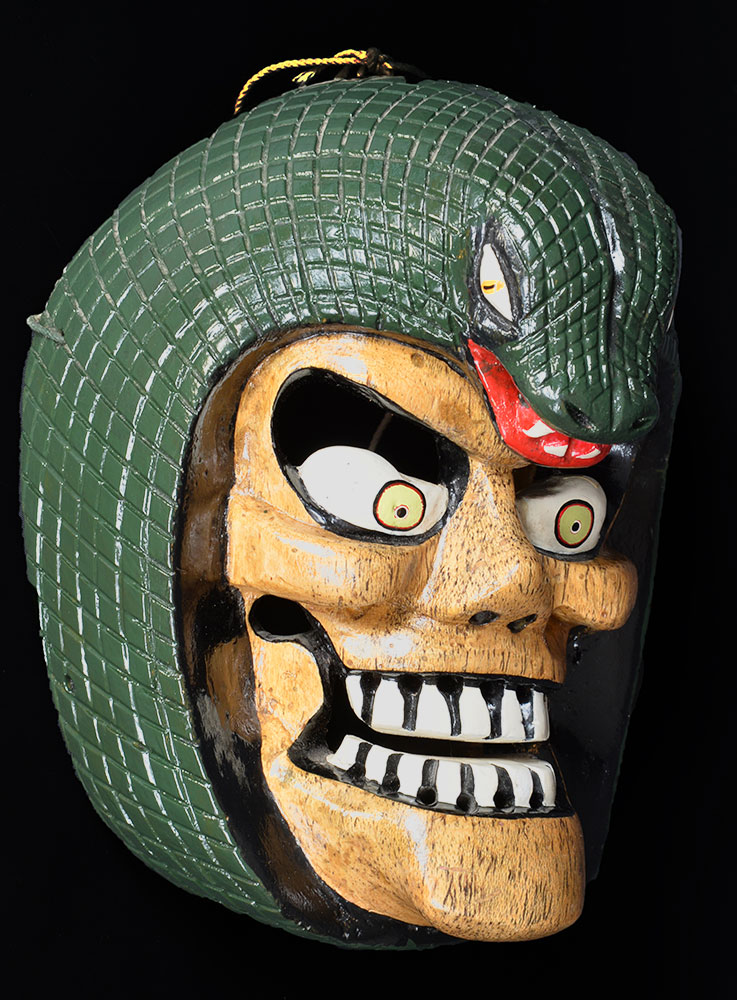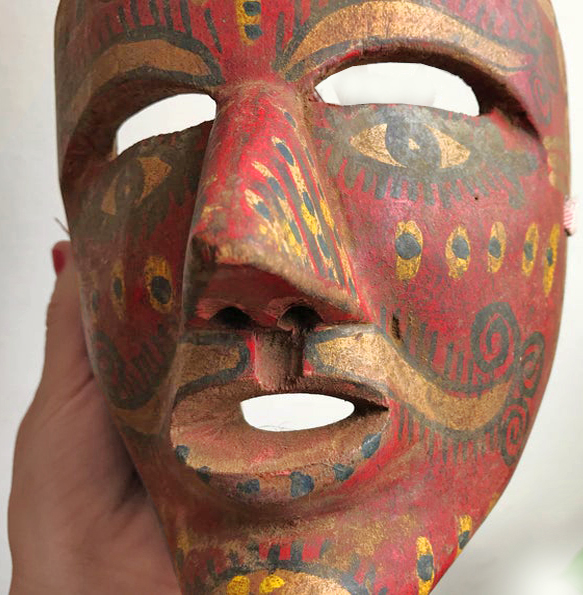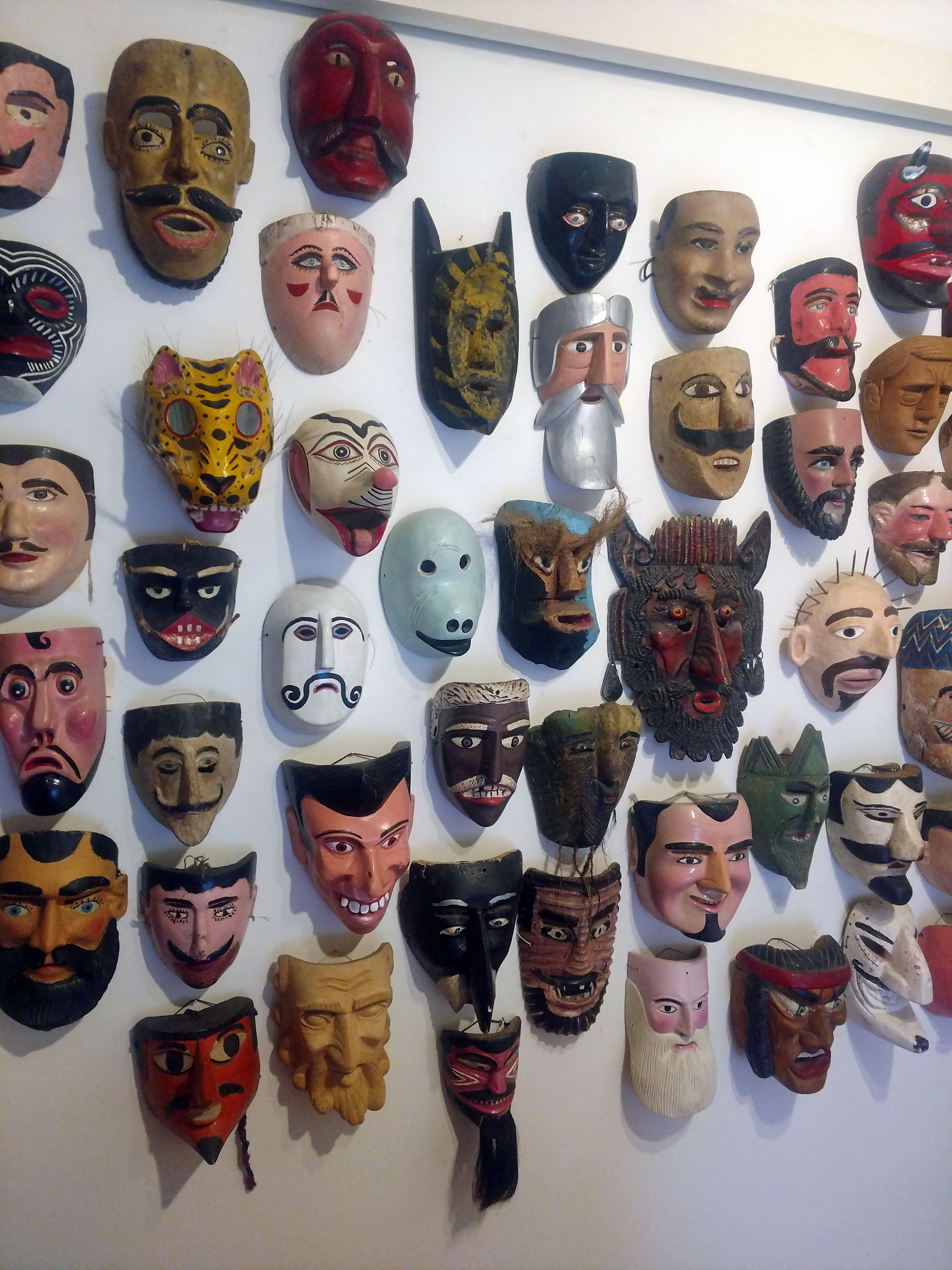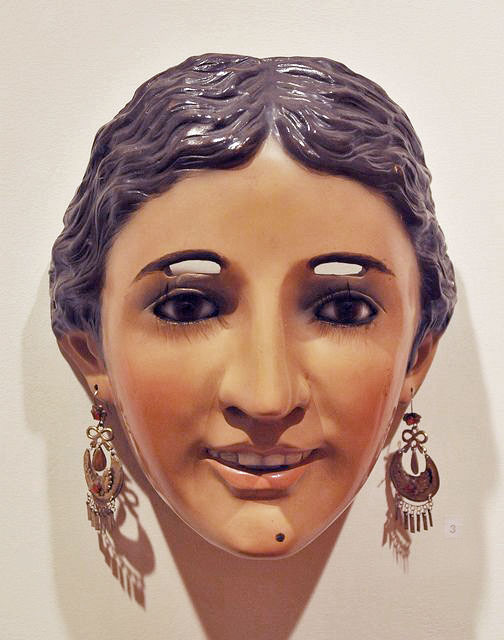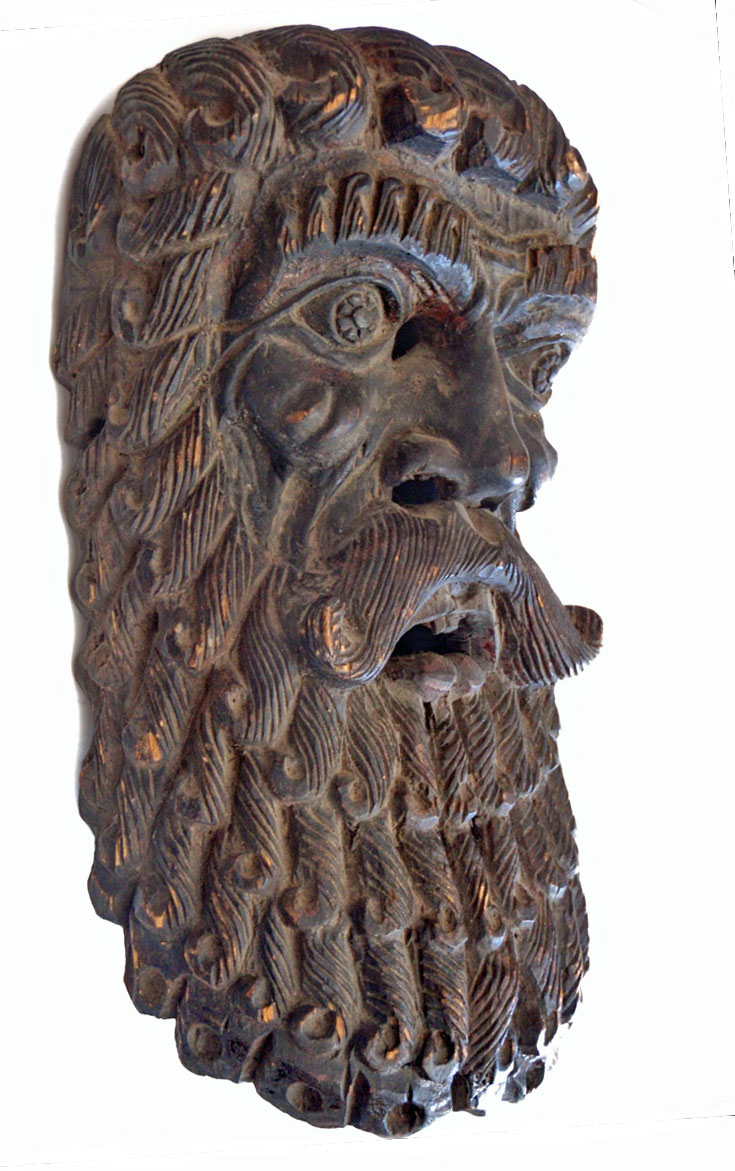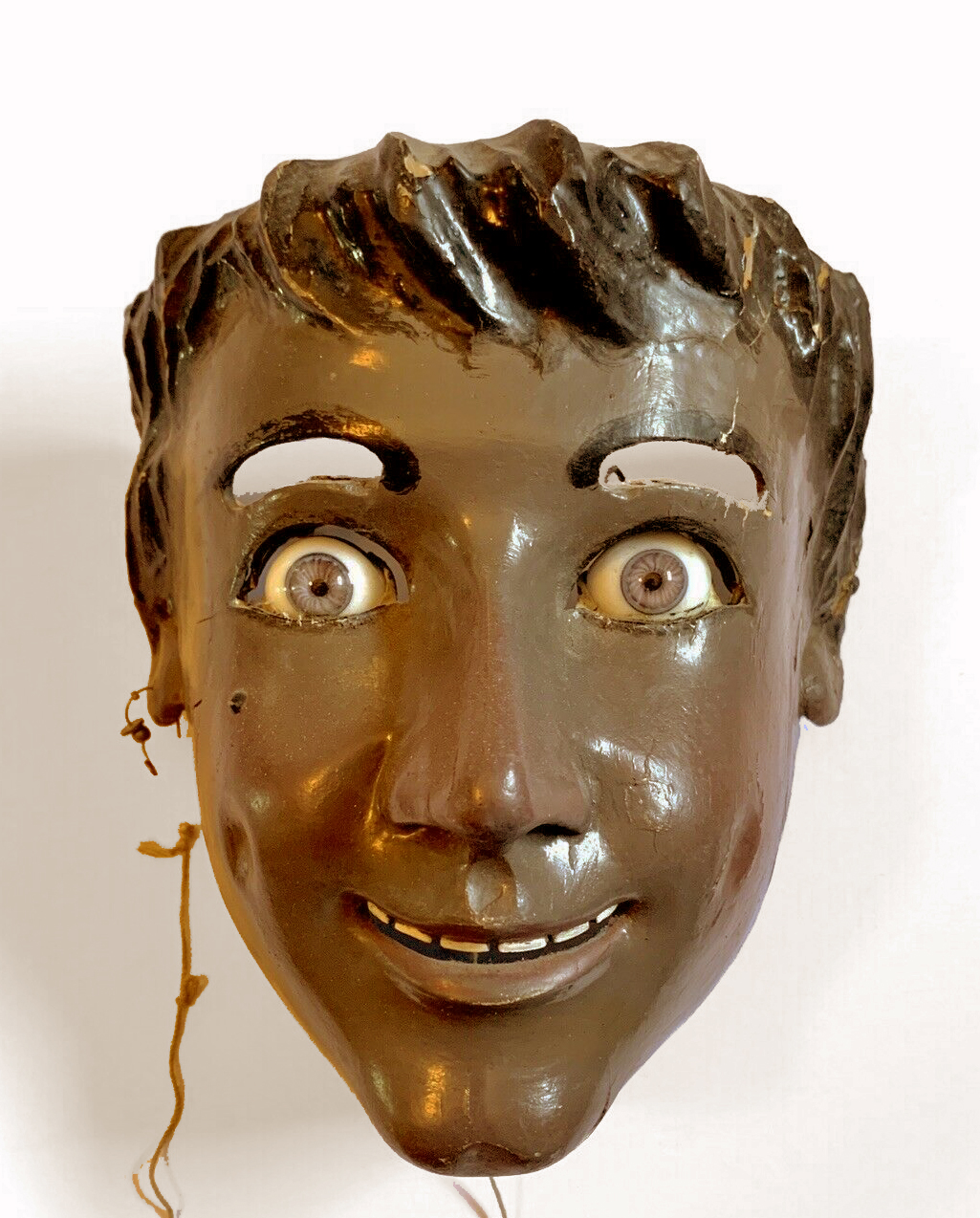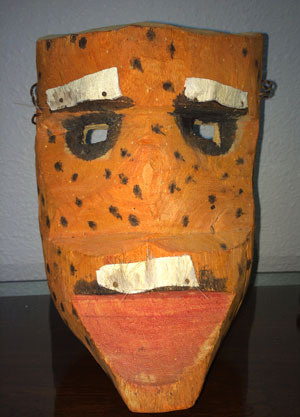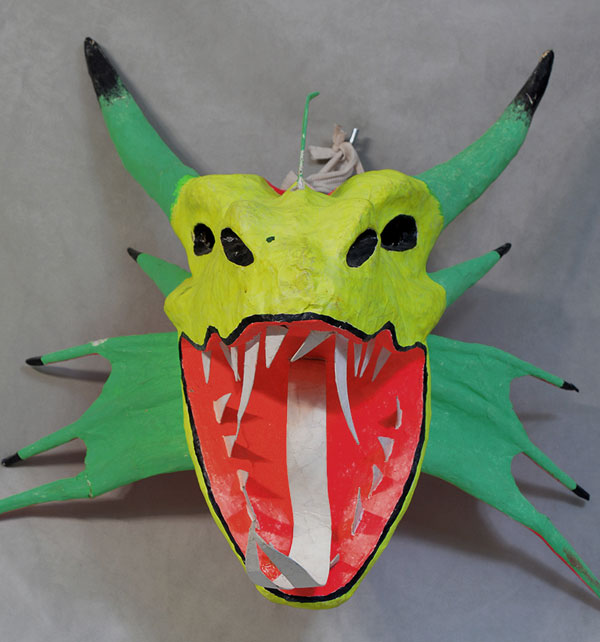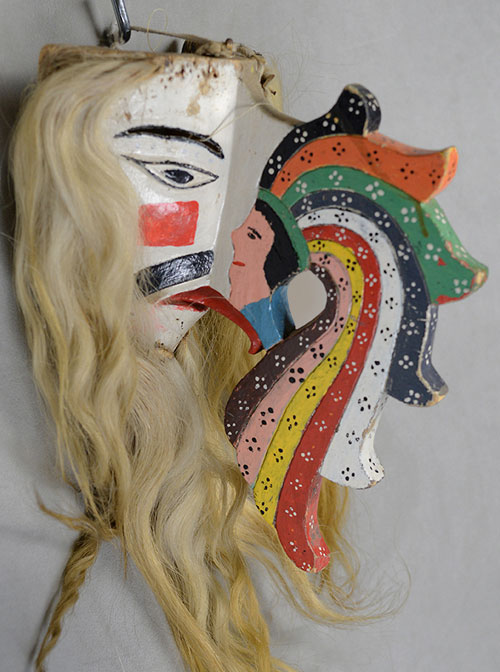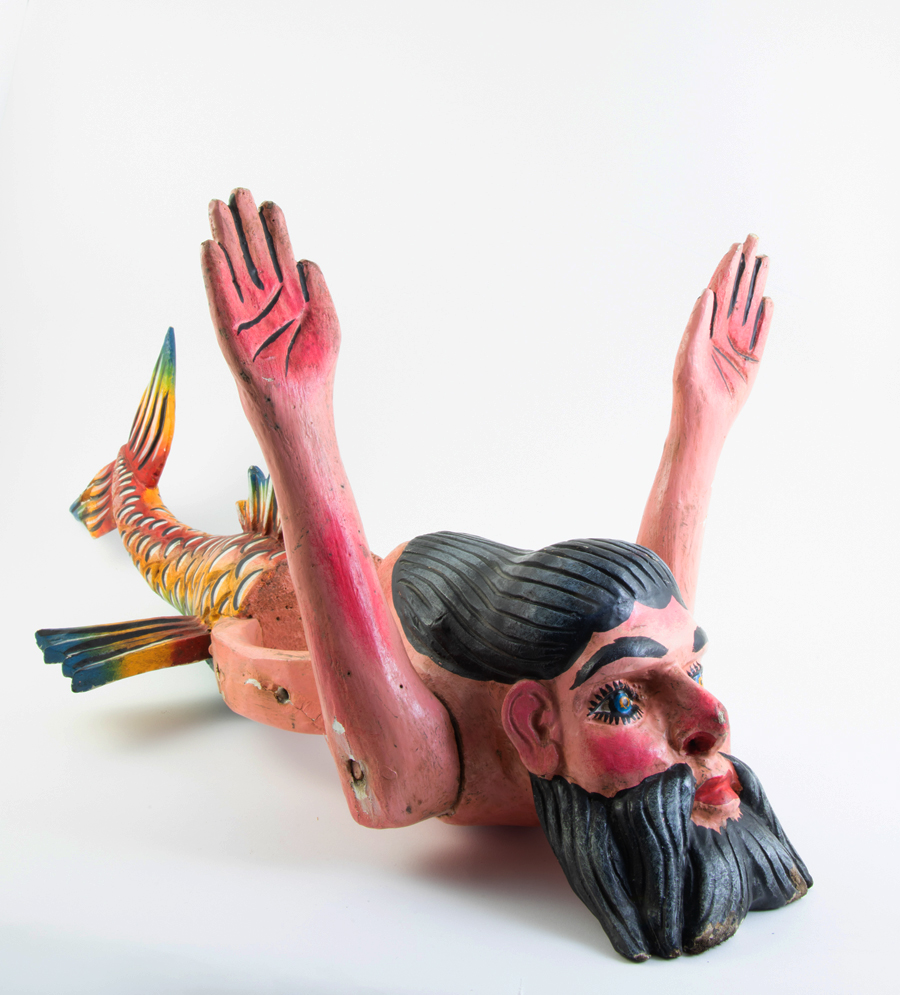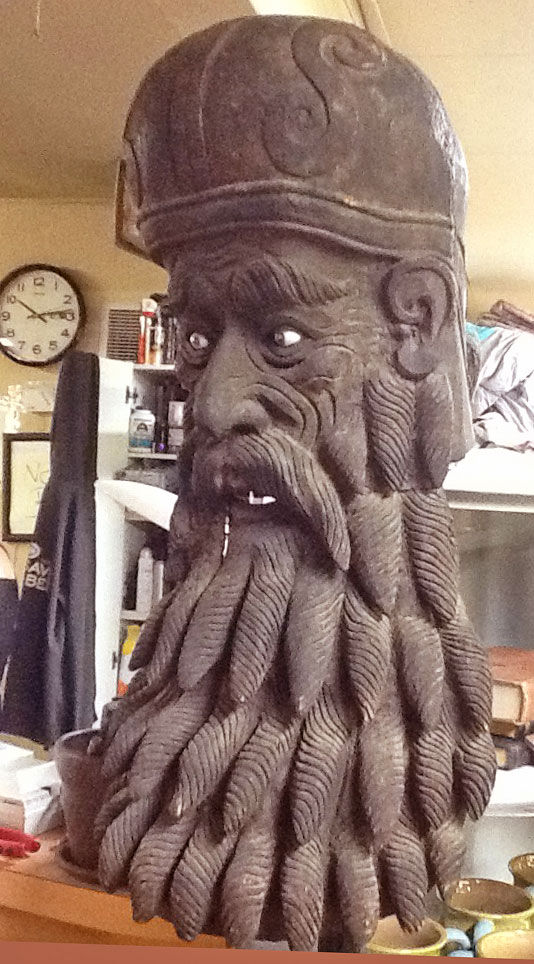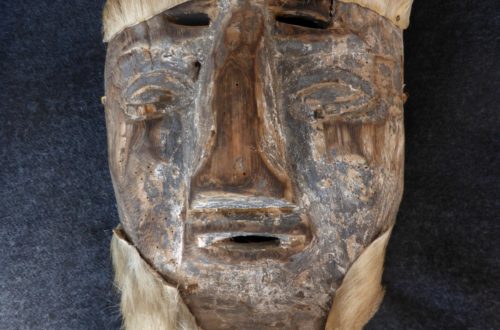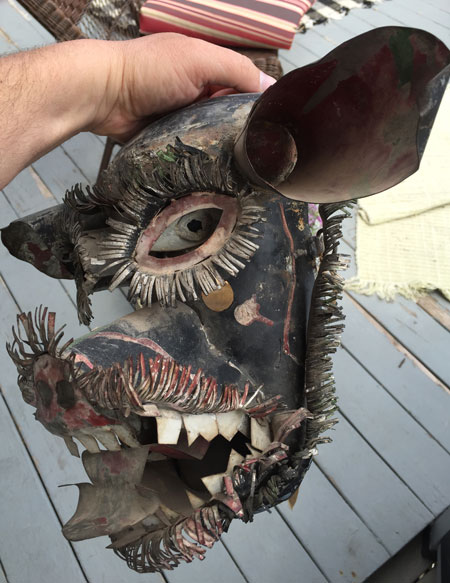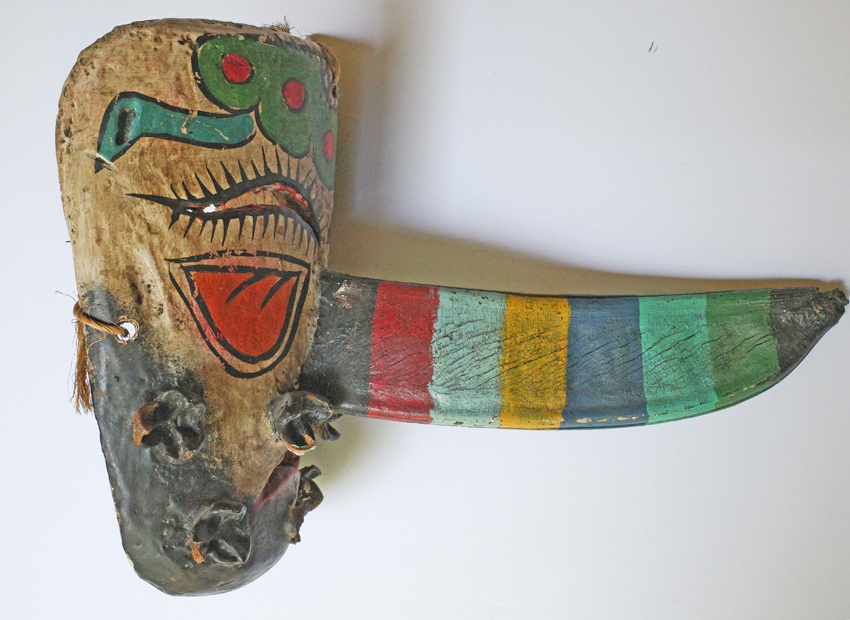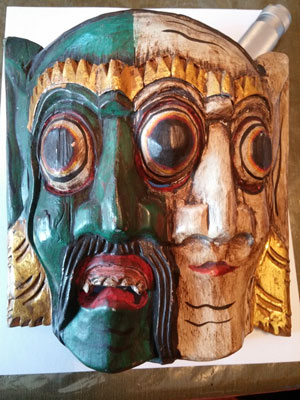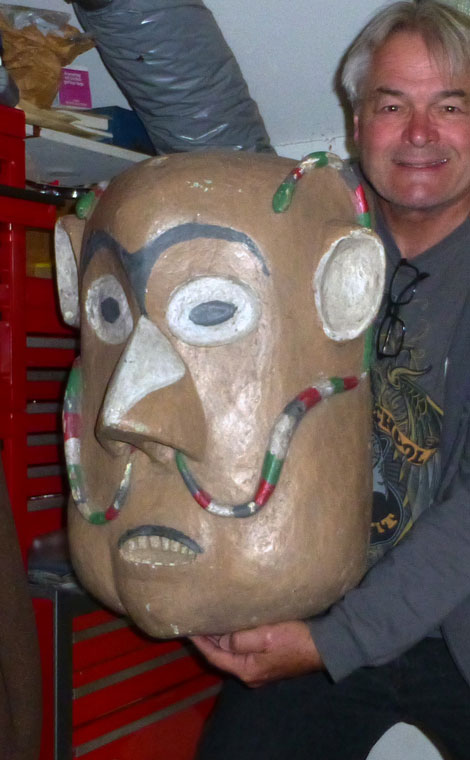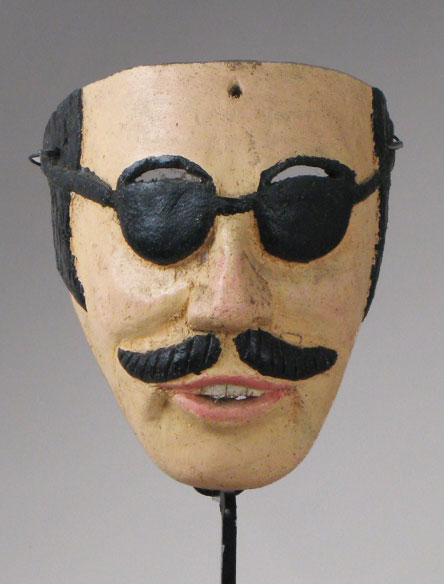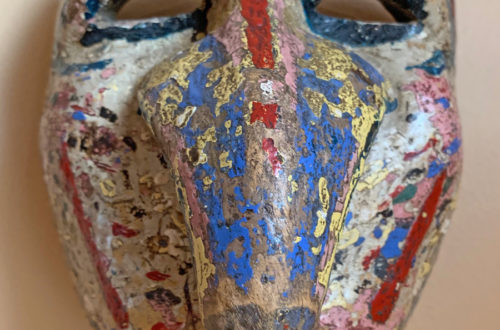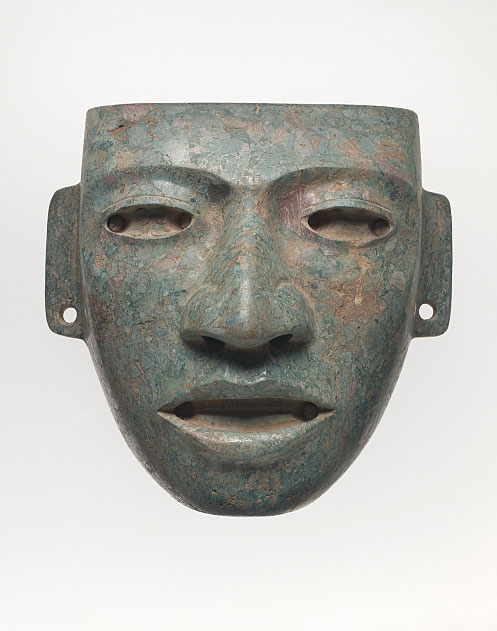Greetings, mask fans! Today, we’re embarking on a journey that’s going to shake up your a little bit. Now, we are sorry for the inconvenience but that Mexican mask that you love so much could be fake! Oh, was that too fast? ok picture this: You’ve got this beautiful Mexican mask hanging on your wall. You love it. You’ve told all your friends about it. You’ve spun tales of its ancient origins, of indigenous people dancing under the sun, the mask’s vibrant colors reflecting the fiery spirit of the celebration. You’ve imagined it surviving fires, enduring battles for independence, and witnessing centuries of history. Well, brace yourselves, because we’re about…
-
-
The Devil’s Craft: A Mexican Papier-mâché Masterpiece
Ask: I recently purchased this mask at an antique market. The seller informed me that it belonged to a mask collector whose estate was currently being sold. The mask was labeled as Mexican however the seller knew nothing else about it. I purchased this mask as well as one other for $125. The mask appears to be Papier-mâché. This mask design looks somewhat like the Diablo masks from Nahua people of Temalucatzingo, Guerrero but since it’s Papier-mâché, I’m thinking maybe it’s from Mexico City since there quite a lot of papier-mâché crafts made there. I’ve also seen papier-mâché Diablo masks from Oaxaca and the Cora people, of Nayarit use…
-
Embark on a Mask-terful Journey: Oaxaca, the Ultimate Starting Point for Aspiring Mask Collectors!
For mask collectors and adventure seekers Oaxaca has it all. There are countless festivals and celebrations many of which involve the use of masks. You’ll even see the use of masks in some weddings and graduation ceremonies! I’ve traveled to numerous places around the world and Oaxaca, Mexico holds a special place in my heart. I’d go as so far as to call Oaxaca my second home. I’ve spent more time in Oaxaca than anywhere else in the world (other than Lancaster, Pennsylvania, USA where I grew up). In addition to masks, there are amazing ancient ruins (Zapotec, Monte Alban) just a 30-minute bus ride from the center along with…
-
Mexican mask with pointed cap?
Q: I bought this mask at a online auction here in Switzerland. It was declared as antique Tyrolean mask. For me it looked more like Mexican? It is made of very light weight wood and rather small. The size is 43 cm x 14 cm. Thank you very much for your help. Kind regards from Zurich. David, 1827A: This mask looks more Mexican to me as well, though I can’t be sure. I haven’t seen a mascara with this kind of cap before. I hope some viewer will make a comment.
-
Olmec carved stone mask
The Olmec, whose heartland was located in present-day Mexico from 1200-400 B.C., excelled in creating fine greenstone sculptures. From the middle of the 11th century B.C. to the Spanish Conquest in the 16th century, green and blue colored stones were esteemed across Mesoamerica for their exceptional luster and translucency. The Olmec especially valued the bluish color of this jadeite mask. Jadeite, a rare variety of greenstone, occurs naturally in very few places around the world. 1819 Despite the concave depression, this mask was not made to be worn on the face, at least not by the living. Unlike the earlobes, which feature small holes, neither the eyes nor the mouth…
-
Red Moor mask, E. Central Mexico
Though faded and dirty, this colorful red Moor mask is a classic. It could be over a 100 years old, or a very well made replica. Moor masks can also be painted gray, brown or black. The Dance of the Moors and Christians is an important celebration in the states of Veracruz, Hidalgo, Talaxcala and Puebla. The dance arose from the teachings of missionaries as part of an effort to instill respect for and fear of the Spaniards in the indigenous peoples, and to convince them that the victory of Christianity over other faiths—by violence whenever necessary—was inevitable.
-
Catrin mask from Tlaxcala, Mexico
Tlaxcala is a small state close to the center of Mexico where they have many carnivals with masked dancer called Catrins. The characters portrayed can be male or female, any age or any race. They are also of high quality and often sell to visiting tourists for a lot of money. This black boy mask has been dance a lot. A mush beer gets drunk at the carnivals, which may explain the damage. Newer ones can be magnificence works of art. One of the great things about Mexican masks is that you can find high art and primitive, low art. Better yet, there are all kinds of animals, monsters, gods,…
-
Mask worn on waist
Q: Here are the Mexican masks I’ve photographed and cataloged so far. I have many more to do. Pick any one you want. Kevin, 1800 A: I’ll but pick the most unusual one. It is a newly made decorative from Guerrero, Mexico. Some of the dancers in that state impersonate St. James, fish, mermaids, or horses that they wear around their waists as if they’re riding them. Though these strange masks are popular with tourists and mask collectors now, they’ve been danced in Guerrero for hundreds of years. This one would never be danced. Only a tourist will buy one with the tail of a mermaid…
-
You can collect decoratives
Q: This mask was acquired by my wife in Mexico City. I am having difficulties discerning it’s origins. She was told it was from Veracruz, but we are unsure. David, 1796 A: Masks with bean pod noses have been made for tourists in Mexico for probably 100 years. So have many other unusual masks. These undesireable masks are called decorativas in Spanish. When I started collecting Mexican masks in the 1980’s I was told to avoid decoratives. Only collect authentic masks– those that were danced in the villages. I followed the rules for at least 10 years, but then began noticing how clever many of the decoratives could be. Often…
-
Pilate mask from Guerrero
Charles sent these scans along with those of four other masks for an appraisal. I asked if I could post this one with its great beard and moveable jaw. In my opinion it characterizes Pontius Pilate in the Dance of Santiago as celebrated by the Nahua people living in the state of Guerrero, Mexico. Though well used and possibly old, it is still wonderful to behold. I hope Charles will share more information about his valuable piece of folk art in our comments box. Bob, 1774

